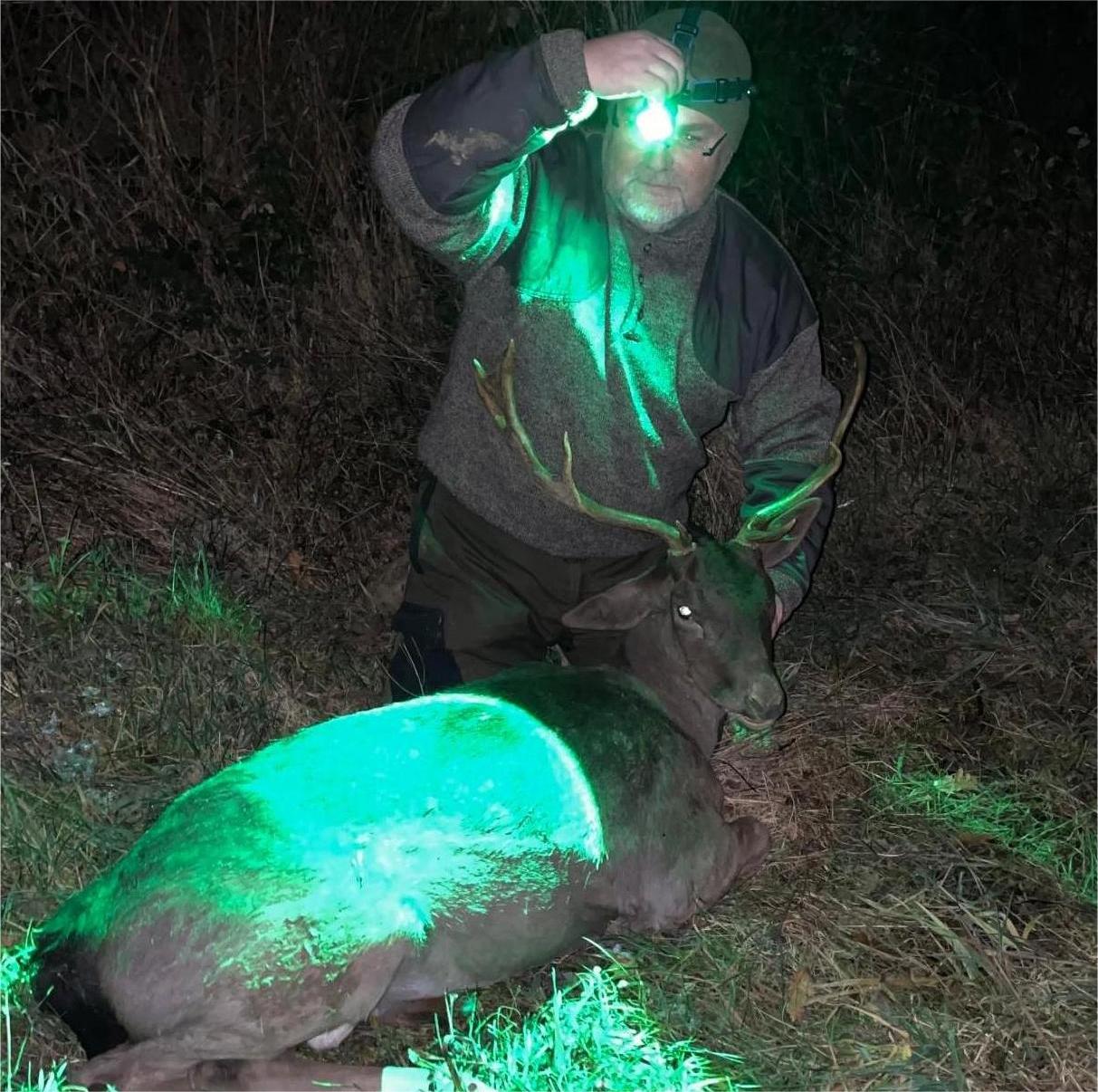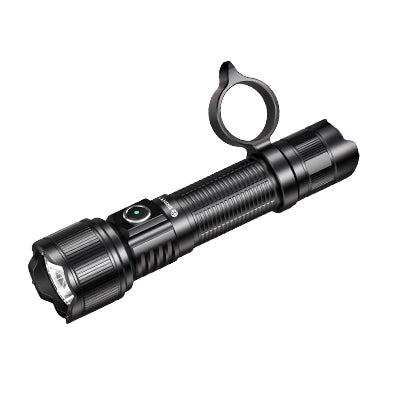Introduction — The Unspoken Rule of Successful Hunting
Ask any seasoned hunter about their most valuable skill, and they’ll likely talk about stealth, patience, or marksmanship. Yet there’s another, quieter secret behind every successful hunt—light discipline.
This subtle but crucial skill separates the average hunter from the expert. It’s not about how powerful your flashlight is—it’s about how, when, and where you use it.
Maintaining proper light control determines whether you stay hidden in the darkness or announce your presence to every creature within sight.
Understanding Light Discipline
Light discipline refers to the strategic use and management of artificial light in the field. It means illuminating only when necessary, at the right intensity, and in a way that minimizes detection.
Many hunters make the mistake of over-lighting—flooding their surroundings with brightness to feel safer or to see farther. However, wildlife interprets sudden or strong illumination as a sign of danger.
Mastering light control means balancing visibility for yourself while keeping your presence invisible to your target.
In practice, this could mean using a headlamp in low mode while moving through thick brush, then switching to a focused beam only when scanning open terrain.

The Science Behind Stealth Lighting
Different animals perceive light differently.
- Deer and boar, for instance, are highly sensitive to blue and white light, but much less reactive to red and green wavelengths.
- Predatory animals, like foxes or coyotes, have sharper light contrast detection, which means even brief flashes can alert them.
Understanding these biological sensitivities gives hunters an edge.
- Red light preserves night vision and helps with stealth tracking.
- Green light offers greater distance and contrast while still maintaining low visibility to most game.
- White light is best reserved for post-shot tracking or navigation—not active stalking.
Selecting the right color and intensity ensures your light works for you, not against you.
Practical Light Discipline Techniques
Putting theory into practice requires deliberate control:
- Use low brightness when moving. It’s enough to navigate safely without spooking wildlife.
- Avoid shining your beam directly ahead for long periods. Instead, angle it downward or use bounce lighting off surfaces.
- Limit unnecessary activation. Every click or flicker can reveal your position.
- Plan your light strategy in advance. Assign brightness levels and color modes for each hunting phase—entry, tracking, observation, and exit.
- Avoid reflective surfaces. Glossy gear or shiny optics can betray your presence even with low light.
Small habits like these gradually form the instinct of true light discipline.

Recommended Lighting Tools for Controlled Illumination
Not all lights are created equal—especially when stealth and control matter most.
Here are a few Brinyte tools specifically designed to support disciplined, tactical illumination:
Brinyte HL28 Artemis Headlamp
- Adjustable zoomable beam for both flood and spot modes.
- Tri-color light sources (white, red, green) to adapt to terrain and target species.
- Ideal for quiet tracking and long waits in ambush setups.
Brinyte T18 Artemis Flashlight
- Precision throw beam with optional red or green filters.
- Long-range targeting for hunters who need visibility at a distance.
- Excellent for scanning ridgelines or spotting movement without overwhelming brightness.
Brinyte HC01 Headlamp
- Lightweight, compact, and dual-color (white/red).
- Perfect for close-up work, gear setup, or reading maps during night hunts.
- Designed to maintain night vision while conserving battery life.
Each of these lights reflects the principle of purpose-driven illumination—tools built for control, not chaos.
Pro Tips from Experienced Hunters
From field-tested experience, professional hunters recommend these additional light discipline habits:
- Pre-set your brightness and color modes before heading out—avoid fumbling with controls in the dark.
- Keep your light silent—choose gear with soft switches and minimal click noise.
- Use hand or hat brims to block spill light from reaching your face.
- Carry a backup light or battery in case you need quick visibility without switching main modes.
- Practice light timing—short, intentional bursts are more effective than constant illumination.
These small refinements make the difference between a missed opportunity and a successful harvest.

Frequently Asked Questions
Q1: What does “light discipline” mean in hunting?
Light discipline refers to the controlled and intentional use of lighting in the field. It means adjusting brightness, beam direction, and color to avoid alerting wildlife or revealing your position. Mastering light discipline allows hunters to stay stealthy, maintain night vision, and navigate safely without scaring away game.
Q2: Why is red or green light better for hunting at night?
Red and green beams are less likely to startle animals compared to white light.
- Red light preserves your night vision and is ideal for stealthy tracking.
- Green light provides greater visibility and contrast in open terrain, helping spot eyeshine without alarming the game.
Using flashlights like the Brinyte HL28 Artemis or Brinyte T18 Artemis, which offer multiple light colors, gives hunters flexible control for any situation.
Q3: How bright should my flashlight be for hunting?
You don’t always need maximum brightness. For navigation and setup, low to medium modes (100–300 lumens) are sufficient. Reserve high or turbo modes for scanning or long-range observation. Too much brightness can cause glare, reduce your night vision, and risk alerting nearby animals. Lights with adjustable output—like Brinyte HL28—let you fine-tune illumination for each task.
Q4: What are the most common lighting mistakes hunters make?
The biggest errors include:
- Overusing white or turbo mode.
- Shining beams too high or directly ahead.
- Ignoring light color strategy.
- Failing to test gear before the hunt.
These mistakes often lead to battery drain or spooked targets. Practicing light discipline and testing your flashlight modes before heading out can prevent these issues.
Q5: How can I keep my flashlight hidden while still seeing where I’m going?
Angle your beam toward the ground or to the side to reduce forward glare. Use low brightness or red light mode while walking. Avoid shining your light on reflective surfaces or other hunters’ gear. Headlamps with adjustable tilt angles—like the Brinyte HC01—are ideal for maintaining low visibility and safe movement.
Q6: What lighting setup do professional hunters recommend?
Experienced hunters often carry a dual setup:
- A headlamp for hands-free mobility (e.g., HL28 or HC01).
- A tactical flashlight for scanning and distance spotting (e.g., T18 Artemis).
This combination offers versatility—low light for movement and precision light for observation—ensuring both stealth and efficiency in the field.
Conclusion — Mastering Light Discipline, Mastering the Hunt
In the wild, visibility is a double-edged sword. The same light that helps you see can just as easily expose you.
Light discipline isn’t about avoiding light—it’s about using it with precision and purpose.
The best hunters understand that control, not brightness, defines success.
💡 Pro Recommendation: Explore Brinyte’s hunting lineup—like T18, HL28, and HC01—to refine your stealth strategy this season. Engineered for beam control, color versatility, and field durability, they give you every advantage where it matters most: in the dark.
Stay focused, stay unseen, and let your light serve your purpose—not reveal it.



